19+ Sample Policy Proposal Forms
-

Health Policy Proposal Form
download now -
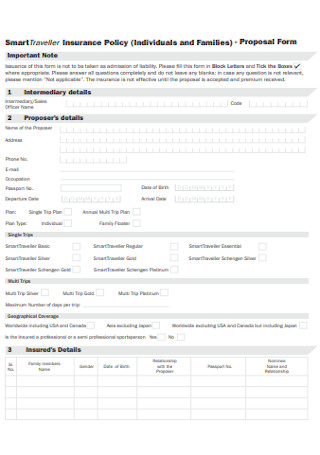
Insurance Policy Proposal Form
download now -

General Policy Proposal Form
download now -
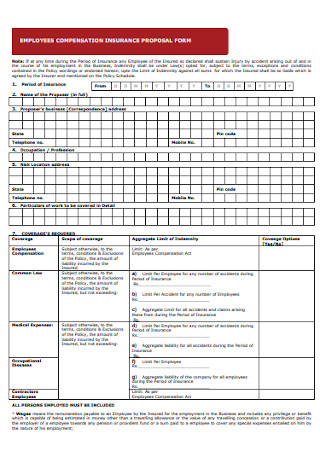
Employee Policy Proposal Form
download now -
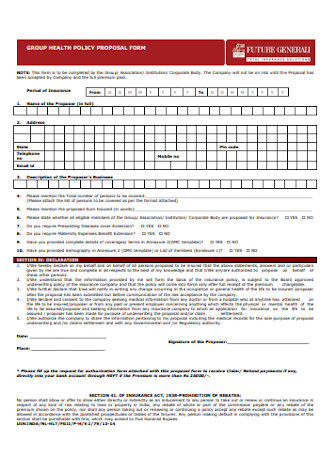
Sample Health Policy Proposal Form
download now -
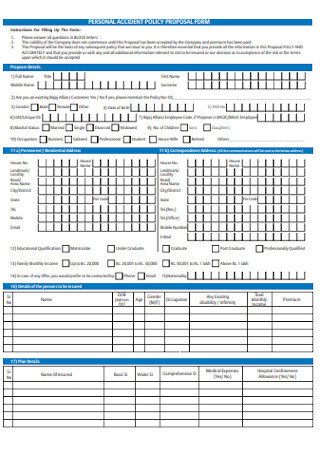
Accident Policy Proposal Form
download now -
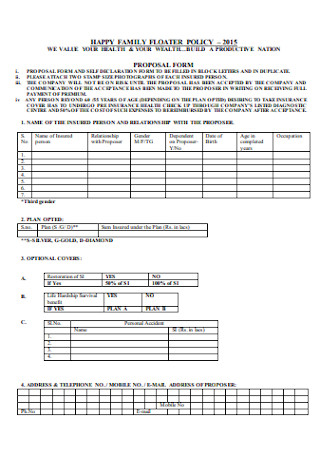
Family Policy Proposal Form
download now -
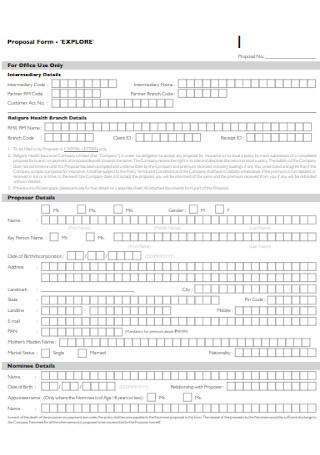
Health Insurance Proposal Form
download now -

Pension Policy Proposal Form
download now -

Mediclaim Policy Proposal Form
download now -
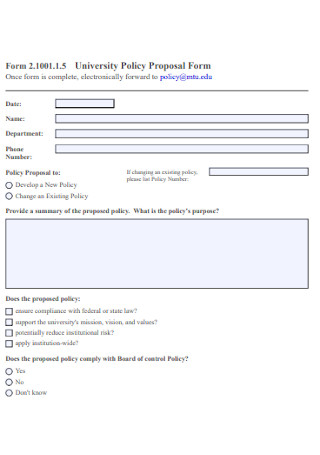
University Policy Proposal Form
download now -

General Insurance Proposal Form
download now -
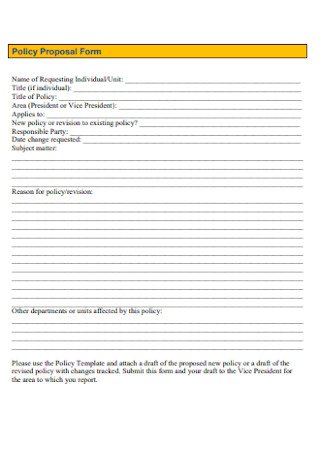
Policy Proposal Form Format
download now -
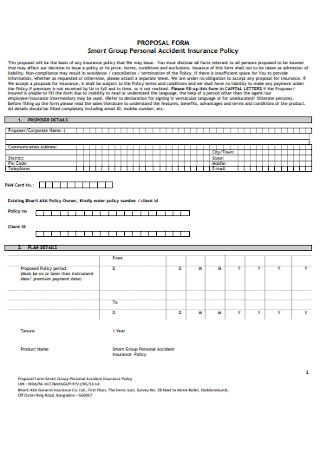
Personal Accident Policy Proposal
download now -
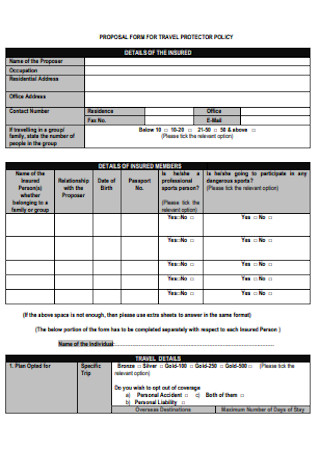
Travel Policy Proposal Form
download now -
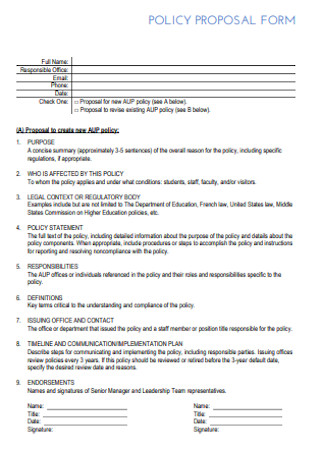
Basic Policy Proposal Form
download now -
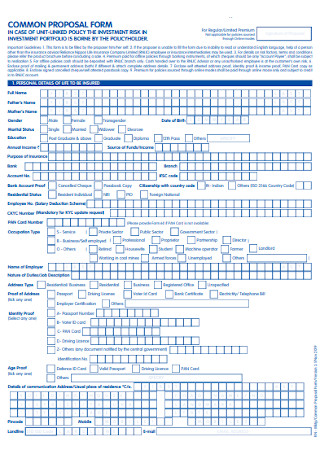
Common Policy Proposal Form
download now -
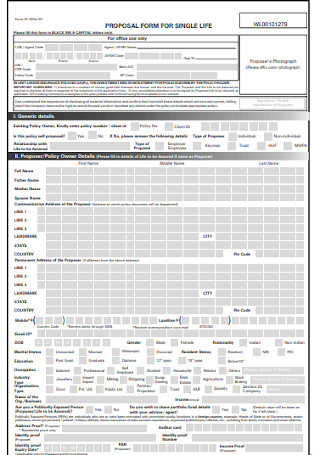
Proposal Form for Single Life
download now
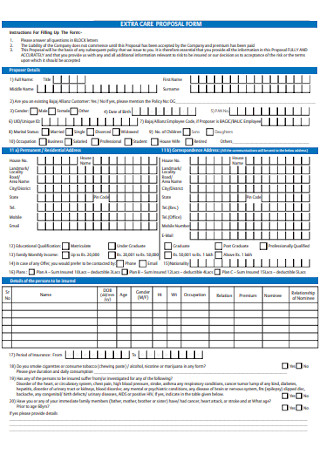
Policy Care Proposal FOrm
download now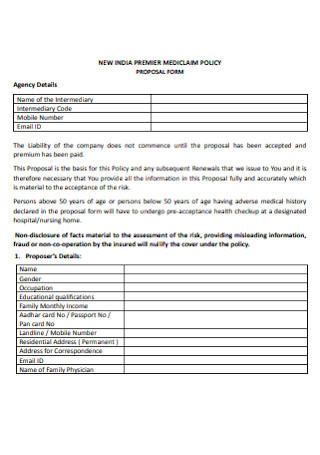
Mediclaim Policy Proposal Form Example
download now[/ns_li]FREE Policy Proposal Form s to Download
19+ Sample Policy Proposal Forms
What is a Policy Proposal Form?
Policy Examples
Essential Stages of the Policymaking Process
How to Write a Policy Proposal Form
FAQs
How to construct a policy proposal form?
How long should a policy proposal form be?
What are some common examples of policy proposal forms?
What is a life insurance policy proposal form?
What is the standard format and layout of a policy proposal?
What is a Policy Proposal Form?
A policy proposal form is a formal proposal document that provides a historical record of the need and process of policymaking prepared by the Chief Executive, the Board, policy proposal writers, and other key policymakers in various government agencies, organizations, and private institutions. It contains a standard layout and outline of the policy, its significance, and procedures on how it should be followed as it affects a greater variety of people and interests. The proposed policy can take in many different forms such as a law, regulation, or the set of all the laws and regulations that govern a specific issue, area, or problem.
Based on a 2022 statistical report published by Pew Research Center, 71% of 5,128 U.S. adults surveyed on Jan. 10-17, 2022, rate strengthening the economy as a top policy priority, succeeded by lowering health care costs (61%), addressing the COVID-19 virus (60%), improving education (58%), and securing Social Security (57%). Policy proposal writers, project managers, researchers, educators, and many other policy decision-makers in federal, state, and local government agencies, organizations, and other private institutions should consider the public interest. They must be capable and skilled in developing policy documents such as policy statements and proposal forms for effective policymaking and implementation.
Policy Examples
There are eclectic examples of policy forms used by many educators, executives, project managers, researchers, and proposal writers in various fields and sectors such as business, education, legal, healthcare, workplace, and non-profit organizations. What are some common examples of policies?
1. Workplace Policy
A workplace policy is any rule or guideline developed and implemented in a professional setting that specifies proper conduct or best practices. There are various workplace policies that commonly addressed health and safety and peer or customer interactions, and other topics. It is integral to set workplace policies because they ensure compliance, promote consistency and fairness, promote best practices, build expectations, and create a safer environment. Several common types of workplace policies are attendance policy, code of conduct, equal opportunity policy, cybersecurity policy, and social media policy.
2. Fire Insurance Policy
A fire insurance policy is typically included in most standard homeowners insurance policies with coverage that protects a person’s home from fire damage. It covers the guidelines for home repairs and replacements if a fire damages someone’s home, as well as a variety of risks and hazards associated with fire, smoke, water damage, and other types of damage. This policy has four sections: declaration, insuring agreements, conditions, and exclusions. A declaration is a brief description and location of the property, the insured amount, and the name of the insured. For the insuring agreements, detail the premium amount, obligations of the insured, and actions the insured should do in the event of loss, and resultant claim. Describe what suspends or restricts the coverage and what perils are not covered under the fire policy.
3. Healthcare Policy
One of the fundamental aspects of the U.S. healthcare system is healthcare policy as it helps shape and protect the health and well-being of the population. Doctors, nurses, health administrators, hospital staff members, and other medical professionals should know and understand all aspects of a healthcare policy so that they can use their expertise to aid in constructing new policies. Develop a valuable healthcare policy for your hospital and define the decisions, goals, and actions that determine how care is administered. A healthcare policy is beneficial because it helps establish guidelines that benefit patients, healthcare organizations, and the healthcare system and it can help prevent human error and inefficient communication in the medical decision-making process. Some examples of healthcare policies are patient care policies, drug policies, and employee health policies.
4. Life Insurance Policy
A life insurance policy is a type of policy that focuses on the standard guidelines of a life insurance. There are several types of life insurance policies such as term life insurance policies, whole life insurance, universal life insurance, final expense insurance, and group life insurance. Term life insurance policy lasts for a specific set number of years. Whole life insurance does not expire as it provides a death benefit and a cash value.
Essential Stages of the Policymaking Process
Public policies are established and carried out by government agencies and private institutions intended to solve various problems and improve wide-ranging aspects and overall quality of life for the people. They are enacted to regulate businesses, companies, and industries and to support state and city governments and the people. What are the essential stages of policymaking process?
How to Write a Policy Proposal Form
Policies and procedures are made by every organization in order to operate effectively and successfully and to reduce the risk of liability. Define and outline officially approved processes and standard practice instructions to accomplish writing an effective policy proposal form. What is the basic framework and layout of a formal policy proposal?
Step 1: Create a Brief Introduction
Develop a clear, brief, and simple summary of the policy proposal as you state the problem, the solution, the costs, and the benefits. Identify your reader and make this part convincing and engaging to the audience. Know who will read your policy proposal form and who decides if it should get denied or accepted. Explore on certain issues and topics that you highly care about and use benefits and language that will resonate with your target audience.
Step 2: State the Issue
Describe the issue or problem or insert the statement of need that your proposed policy will assess and solve. It also refers to the background information, importance, main argument, purpose, and problem. Consider who gets affected by the policy proposal and what is your reason for making the policy proposal. Explain the current situation including the problems related to it.
Step 3: Add the Solution and Qualifications
Explain the solution that your proposed policy will implement. Elaborate on your step-by-step plan, the core benefits, and how to overcome any possible challenges and obstacles should they take place. Include your required personnel if any while pointing out their key expertise and professional experience to effectively persuade the readers of your proposal. After that, create a list of an overview of the personnel required to implement the policy proposal successfully.
Step 4: Conclude with the Benefits and Costs
Tell your proposal readers how you can balance the cost of the project against the benefits. Reiterate your main point, main argument, and purpose. Structure a simple breakdown of the expected costs to utilize for each component of your project. Additionally, include a breakdown of the worthwhile benefits of the project to the business, company, government agency, private institution, or organization both non-monetary and monetary. Show your gratitude to the reader as you thank them for giving you the time to present your policy proposal. Don’t forget to give your contact details and make sure that the details are very clear.
Step 5: Prepare the Final Policy Proposal Form
Scan the layout and format of your policy proposal form and double-check. Check if you include all the important forms and attachments. Make sure that the page number and font size requirements are followed properly based on the standard guidelines. Ask help from your team and the policy administration members to review your policy proposal. Proofread, edit and revise the policy proposal form carefully if necessary. Lastly, prepare the final policy proposal form.
FAQs
When constructing a policy proposal form, you need to conduct a comprehensive research to collect fundamental facts to use in your proposal. Write a solid description of the problem and briefly explain a proposed solution. Demonstrate all of the facts. Search, download, and use a standard policy proposal template. Then, cite all of your sources.
A policy proposal form should be 25 to 30 pages long. It must include a work cited or a reference list.
Some examples of policy proposal forms are policy proposal submission forms, insurance policy proposal forms, employee policy proposal forms, healthy policy program proposal forms, accident policy proposal forms, university policy proposal forms, travel policy proposal forms, business continuity policy proposal forms, staff complaint policy proposal forms, no refund policy proposal forms, and family policy proposal forms.
A life insurance policy proposal form is a basic document necessary for a life insurance contract between the insured and the insurance company. It contains important information about the insured such as name, age, full address, education, occupation, and many others. Plus, it includes the medical history of the insured.
The standard format and layout of a policy proposal is a single A4 paper (210 x 297 mm. or 21 x 29.7 cm.) It usually contains 700 words with an appealing design and may have one or more photos. If you are making longer policy proposals, it is possible to make your policy proposal have 8 pages or 3,000 words.
How to construct a policy proposal form?
How long should a policy proposal form be?
What are some common examples of policy proposal forms?
What is a life insurance policy proposal form?
What is the standard format and layout of a policy proposal?
Policy implementation is crucial to educate people or organizations affected by the new policy, modify pre-existing administrative operations or create new systems, and monitor and enforce the necessary policy. Level up your knowledge and understanding of policy proposal writing by reading through informative how-to guides. Look for professionally-designed policy proposal form templates online like on our website as we have sample well-designed policy proposal form templates that you can easily download and use such as policy proposal submission forms, insurance policy proposal forms, employee policy proposal forms, healthy policy program proposal forms, accident policy proposal forms, cancellation policy proposal forms, and family policy proposal forms.
